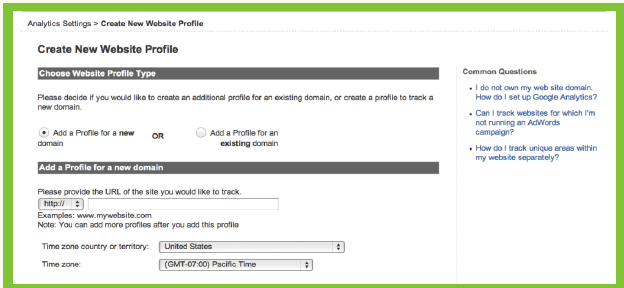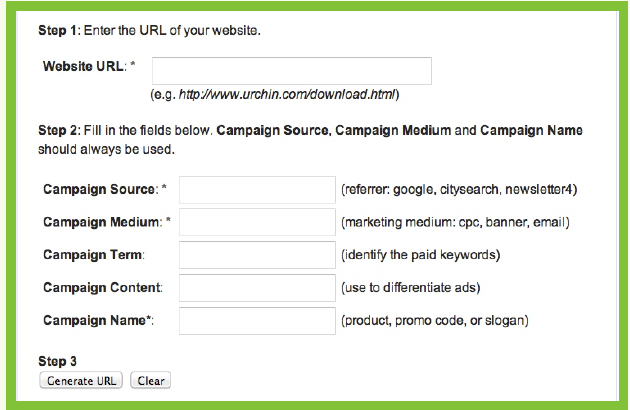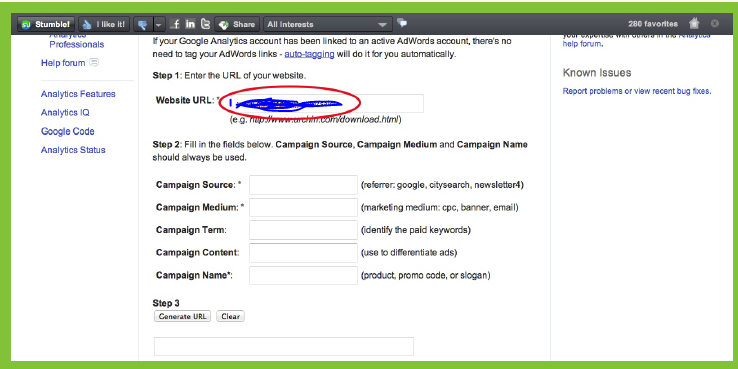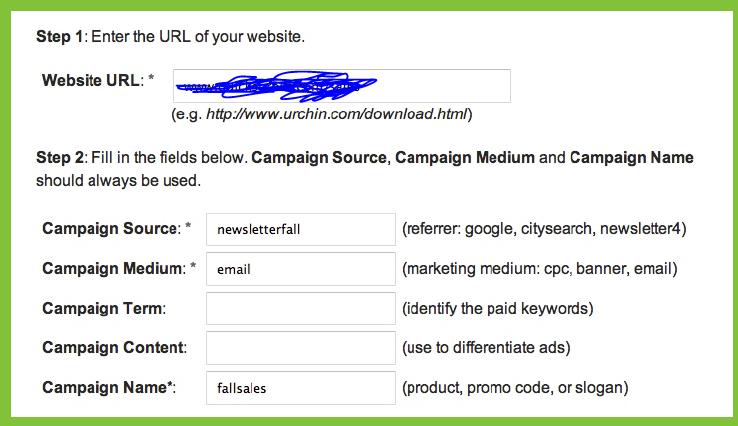GOOGLE ANALYTICS INSTALLATION
Although
this information on its own will educate you how to do many factors relevant to
promotion your
business, I want to create sure you start off on the right feet
and lay a excellent base so that you can
measure the potency of all your efforts and effort and energy.
Marketing includes a variety of projects that all have
considerable results. These dimensions are what
justify your efforts and effort, money and effort. If you are not
calculating what you are doing you will be spending your
time because you are limited to do it again your errors and skip
possibilities to take advantage.
There are plenty of analytic resources at your disposal: Some 100
% free, some compensated. Some concentrate on website
analytics while others concentrate on social. There are resources
that concentrate on calculating one specific thing like
funnels or A/B assessments. Other resources even monitor eye
motions or mouse clicks using warm charts. The point is,
there is no reason to not evaluate everything you are doing. You
might not exactly know how, or what
to evaluate right now but that is what this information is for, to
educate you how to evaluate your marketing
efforts and create sure you are getting a ROI (return on your
investment).
Although I described there are an endless variety of resources at
your convenience to evaluate different
things, my concentrate will be on Search engines Statistics.
Google’s 100 % free analytic device is somewhat of an industry
standard and for excellent reason: it’s 100 % free, popular and
highly effective. With the appropriate modifications and settings
you can evaluate almost anything on your web page.
Search engines Statistics allows you to monitor
several websites in one Search engines Consideration. You are about to create
your
first web page to monitor.
On this type you need to complete the “Website’s
URL” with the actual URL for your web page. Create sure
it is the actual URL, and you should consist of
the “www” if your site's URL has one. Don’t
include it if it does not. The “Account Name”
will instantly complete itself in. You can also modify the Time
Zone and Nation for which you live in.
Once this form has been filled in, click
“Continue”. You will then be given a snippet of code that will be
used to track your website. Follow the
instructions that Google gives you on installing the snippet of code.
If you’re having issues setting up your Google
Analytics account check out Google’s own tutorial on setting
it up here,
TRAFFIC SOURCES
The “Traffic Sources” area of your analytics
dashboard offers a treasure trove of insights into your
website and your visitors. From it you can learn
where your visitors are coming from, which websites are
sending you the most traffic, which keywords are
sending you the most traffic, and which source is
sending you the most traffic.
To Access Your “Traffic Sources” Follow These
Simple Instructions:
- Log into your Google Analytics
account
- Select your account from “Account
Overview” and then select a profile (if you have
- multiple websites you are tracking
under a single account)
- Navigate to your “Dashboard”
- Find and click the “Traffic Sources”
LET’S JUMP RIGHT INTO
GOOGLE ANALYTICS (GA) AND
START AT THE BEGINNING WITH
INSTALLATION.
The first thing you'll need to install is a
Google Account. If you don't have one don't worry its
free. Here's how to get your Google Account:
- Navigate
to Google.com/analytics
- Click
“Sign up for a new Google Account”
- Fill
out the proper fields in the form
Once your new account has been created you’ll
need to set up your new Google Anaytics
account. This can be accomplished in a few easy
steps
- Navigate to Google.com/analytics
- Click “Sign up Now”
- Log in using your new Google
Accounts password and user name that you just created.
- Click “Sign Up”. Done!
Search engines Statistics allows you to monitor
several websites in one Search engines Consideration. You are about to create
your
first web page to monitor.
On this type you need to complete the “Website’s
URL” with the actual URL for your web page. Create sure
it is the actual URL, and you should consist of
the “www” if your site's URL has one. Don’t
include it if it does not. The “Account Name”
will instantly complete itself in. You can also modify the Time
Zone and Nation for which you live in.
Once this form has been filled in, click
“Continue”. You will then be given a snippet of code that will be
used to track your website. Follow the
instructions that Google gives you on installing the snippet of code.
If you’re having issues setting up your Google
Analytics account check out Google’s own tutorial on setting
it up here,
TRAFFIC SOURCES
The “Traffic Sources” area of your analytics
dashboard offers a treasure trove of insights into your
website and your visitors. From it you can learn
where your visitors are coming from, which websites are
sending you the most traffic, which keywords are
sending you the most traffic, and which source is
sending you the most traffic.
To Access Your “Traffic Sources” Follow These
Simple Instructions:
- Log into your Google Analytics
account
- Select your account from “Account
Overview” and then select a profile (if you have
- multiple websites you are tracking
under a single account)
- Navigate to your “Dashboard”
- Find and click the “Traffic Sources”
You will be given
two options: “Overview” and “Sources”.
“Overview”
provides you with a very primary, top-level look at your visitors resources. A
chart will be provided to
you displaying you
the variety of trips you obtained on any selected time frame. Further down the
site you get a
more specific
malfunction of the quantity of visitors each resource (Direct, Recommendation,
or Search) is delivering to
your web page.
Although all of
the details in the “Overview” is useful, the “Sources” area consists of the
most
vital details.
Under the
“Sources” tab you are given the option to select from five choices:
- ALL TRAFFIC
- DIRECT
- REFERRALS
- SEARCH
- CAMPAIGNS
Each of these
options will display very details regarding the amount of visitors each source
has sent. Let us
look at the kind of visitors each “Source” Symbolizes.
All Traffic
As the headline
indicates, this details represents all the visitors to your web page (for
whatever time frame you have
selected) from all
resources. This is a good way to perspective your details when you are trying
to get a primary, holistic
view of where your
details is arriving from. You want to have a healthy visitors profile, without
one
source extremely
prominent the others.
Direct Traffic
Direct Traffic
includes visitors that straight utilized your website. There are various ways a
customer can
directly
accessibility your website such as, writing the URL straight into the URL bar,
simply clicking through a weblink in an
email, or guide
tagging your web page. A immediate check out is from someone who did not
accessibility your website
from a
recommendation website or via a online look for motor.
The issue with the
way Search engines Statistics smashes down and shows Direct Traffic can be discovered
in the point that it
does not tell you
which immediate resource the customer used to get to your website. You are
remaining in the black as to
whether the
customer used a weblink in an e-mail, save, or straight went to your website
with a URL bar.
Later in the
details I will explain to you a way to get around this “blindness” by
tactically using URLs to tag
where your
customers develop.
Search Traffic
Search Visitors
all visitors that comes to your web page via a look for through a online look
for motor. This means
the customer
joined a keyword and key term question into a look for bar that belong to
Search engines, Google, Google, etc., found
your web page, and
clicked-through. Search engines Statistics will crack down your look for
visitors into which
search motor was
used to accessibility your web page and which search phrases were used.
You can find more
details about Search Traffic and Keyword Traffic in the Keyword Traffic section
of this details.
Referral Traffic
Referral Traffic
is when a user is already on one website and clicks a link that takes them to
your website.
This link could be
a text link, an image, a banner, etc.
For example, if
the user is on Site A and clicks a link to your website from Site A then that
will be
reported as
Referral Traffic, with the referring site being Site A. Google Analytics will
display the name of
the referring site
(Site A) and any data recorded associated with that referring site (Site A)
including total
number of visits
from that referring site, time on site, and bounce rate.
Remember, you can
apply any Advanced Segments Google provides or any that you have created on
your
own to Advanced
Segments. Go ahead and apply your Organic Unbranded Traffic filter and access
your
Search Traffic.
Notice how there are no (or very minimal) branded keywords being displayed?
These are
all the keyword
phrases that people are using to access your website via search engine that contain
no
branded terms!
Campaigns
Campaign visitors represents visitors
that comes via an offer URL designed using Google’s Strategy URL
Builder which can be found
Google’s URL Designer is a useful
gizmo for improving campaign URL’s because it does not require you to have
any before encounter with factors or
URL framework. All you need to do is be able to successfully name
your campaign so that you can identify
and distinguish it in your statistics.
Let’s look at how the device performs
and how you can make a Strategy URL by developing one yourself! Let’s
say I want to monitor how many
individuals simply just click a weblink to my sale’s web page from a
publication that I deliver out.
You might ask yourself, why cannot you
just observe the URL without having to develop a unique URL? Well, if
the weblink is in an e-mail, then
Search engines Analytics is going to review it as Immediate Traffic. Just
understanding that it
came via Immediate Traffic is not
really necessary to us since there are so many visitors resources lumped into
Direct
Traffic. We want to be able to
evaluate exactly how many persons visited the weblink so that we can measure
it‘s efficiency, and improve it
further.
So, to summary, we are trying to
observe a weblink we have involved to my sale’s web page in a publication..
Here’s
how to do it:
1.Navigate to http://www.Google.com/support/analytics/bin/answer.py?answer=55578 This is where you will generate your URL.
2.Here you will find this
2.Here you will find this
3.Get into the URL, you would like to monitor. This is the area
where you would like to produce a
custom URL so that you can monitor its visitors.
4.Next, we are going to have to start defining some
parameters so that we can identify this traffic
via our Google Analytics. To do this you should know what each
parameter means.
Campaign Source
This is where the
weblink is going to be placed. For example: Search engines, Tweets, or weblogs.
We are going to complete in
newsletter fall
because the weblink is in our Drop Publication.
Campaign
Medium
This is the method
by which the weblink is provided. This could be CPC, advertising ad, or in our
situation, e-mail.
Campaign
Term
This represents a
cost-per-click (CPC) strategy in which a keyword and key phrase activates a
advertising ad. This is not a
required parameter
to complete, but if your Campaign Medium is CPC then you want to complete
whatever
keyword fits to that
strategy. For our example, we’ll keep it empty.
Campaign
Content
Use this to
distinguish between ads, if you are operating several ads. This parameter is
also optional;
we’ll remove it in
in our example.
Campaign Name
This is the name you’ll give your campaign. This
name should be representative of your link and should
specify the purpose of creating the link. These
names can be whatever you choose, but for reporting and
measuring purposes, they should be relevant to your
goals. You might also want to consider that you
might end up generating multiple Campaign URLs under
the same Campaign Name in the future. For
now we will use fall sales.
This is what our filled in parameters look like,
5.Finally, we are ready to generate our custom URL. All we
need to do is hit “Generate URL” and it
will populate the empty field right below it.
So, we’ve generated our URL and we’ve inserted it into
our newsletter and sent the newsletter out. Now
we want to know how many people clicked the link to our sales
page. Here is how to find that out::
1.
Navigate to your Dashboard and access the analytics
account associated with this “Campaign URL”.
2.
Hit “Traffic Sources” from your right-hand menu bar,
then click “Sources” and finally Campaigns
3.
In
your Campaign Dashboard you should find a familiar graph of traffic. Look at
the campaign
name…look familiar? You are now viewing the traffic
stats related to your “Campaign URL”.
12






No comments:
Post a Comment